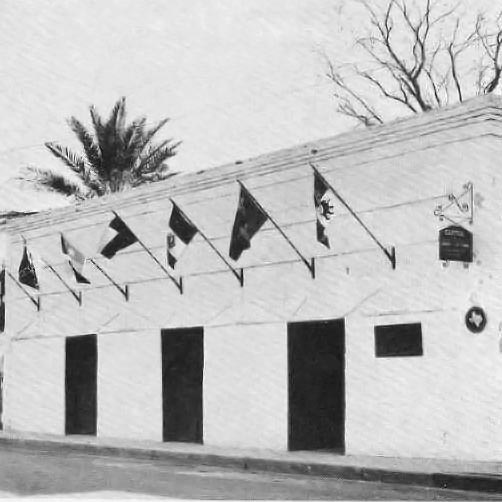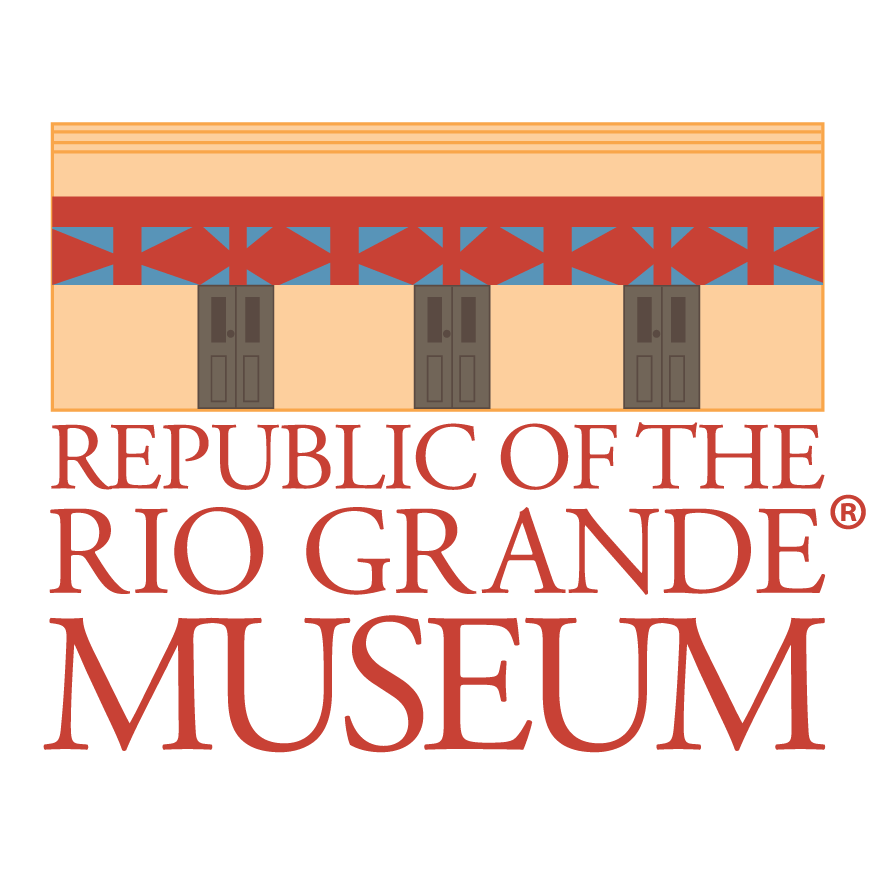
The Republic of the Río Grande® Museum
Restoration philosophers speak of the “life of the building” much like a family’s genealogical history. One would not realize at first glance that the modest building at 1005 Zaragoza Street had such a varied and interesting history. In its existence for almost two centuries, the building has served as a family residence, a republic capitol, an elementary school, and a museum.
Originally the Bartolomé Garcia family home, this structure was built in the 1830s and expanded in 1861 with additional rooms. The original part of the structure is oriented north-south, with large wooden doors which once opened onto a veranda-shaded courtyard on the east. The original cypress lintels over the doorways were probably brought by oxcart from northern Mexico. The orientation of this early part of the home suggests that the original “plaza mayor” (Main Square) lay just to the southeast of the existing San Agustín Plaza.
The second addition faces Zaragoza Street. By this time, the existing streets were laid out by Mayor Samuel Jarvis who named many of them alternately for Mexican and American heroes. The majestic ceiling beams or vigas in the front room consist of one piece of wood measuring 16 feet in length. The October 1861 date of this second addition is inscribed on a ceiling beam in this room.
Architecture
The flat roof and parapet extending above the roof line are characteristic of Mexican vernacular architecture. The thick walls are made of limestone and soft sandstone (piedra de arena) that was hand- quarried and filled with adobe and lime mortar. The walls are plastered with lime, and white-washed. The diamond relief on the front has been traced as far back as the 1920s, and may date to the early 1900s.
According to local tradition, the (Garcia) home served as the Capitol of the Republic of the Río Grande in 1840. The Republic of the Río Grande was created by a constitutional convention near Zapata on January 7, 1840, and attempted to unite the Mexican states of Tamaulipas, Nuevo Leon, and Coahuila y Tejas. After several battles, the Republic’s federalists were defeated by the armies of the Mexican General Mariano Arista. The republic, having declared itself an independent country for 283 days, makes Laredo and the surrounding area, one portion of Texas that has existed under seven flags.
The Garcia home became a museum in 1955 under the auspices of the Laredo Historical Society (forerunner of the Webb County Heritage Foundation). It was named a Recorded Texas Historical Landmark in 1965, and a contributing structure to the San Agustin National Register Historic District in 1973.
Restoration
The Webb County Heritage Foundation’s restoration of the Republic of the Río Grande® Museum in the 1990s solidified the historical authenticity and longevity of the structure. The cement plaster used in older repairs was painstakingly removed from the walls, and a high lime mortar mix was applied. The interior walls have been painted in historic colors determined through paint analysis. Also, the exterior walls received a lime plaster and the historic paint tints were restored. The several layers of roofing on the building were removed, a new roof installed, and the canales (rain drainage system) restored. The site has been graded to allow for drainage away from the structure, and new mechanical and lighting systems safeguard the museum environment.
Now, the exhibits at the Republic of the Rio Grande® Museum highlight life in the early town, and feature a newly created display on the story of the Republic of the Rio Grande. To recreate life in early Laredo, three period rooms reflect an authentic kitchen, bedroom, and a ranching headquarters of the time with documents, precious family heirlooms, and other artifacts on exhibit.
Your support of this historical gem will be greatly appreciated by the proud citizens of Laredo today, and the future generations to come.
Exhibits
Now, the exhibits at the Republic of the Rio Grande® Museum highlight life in the early town, and feature a newly created display on the story of the Republic of the Rio Grande. To recreate life in early Laredo, three period rooms reflect an authentic kitchen, bedroom, and a ranching headquarters of the time with documents, precious family heirlooms, and other artifacts on exhibit.
Your support of this historical gem will be greatly appreciated by the proud citizens of Laredo today, and the future generations to come.
Republic of the Río Grande®
1005 Zaragoza Street, Laredo, Texas, (956) 727-3480
Museum hours:
Tuesday – Saturday from 9:00 a.m. – 4:00 p.m. Closed on Sundays and Mondays
